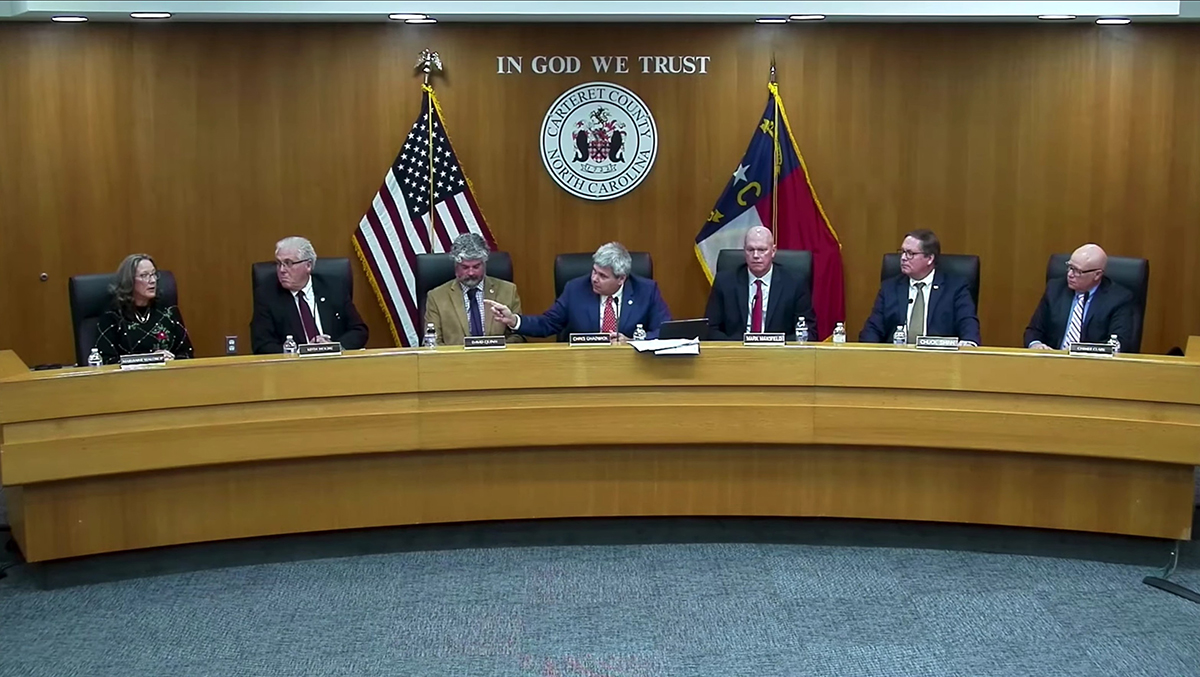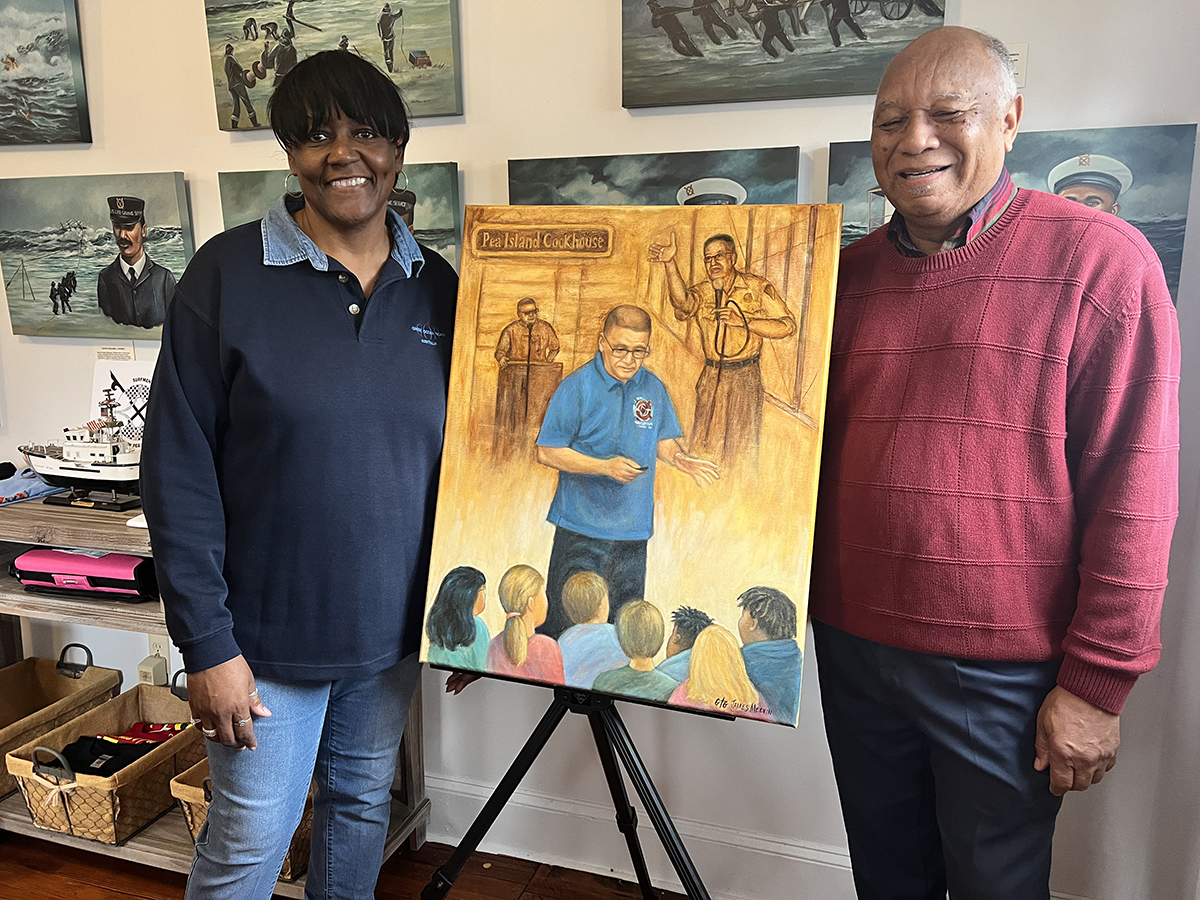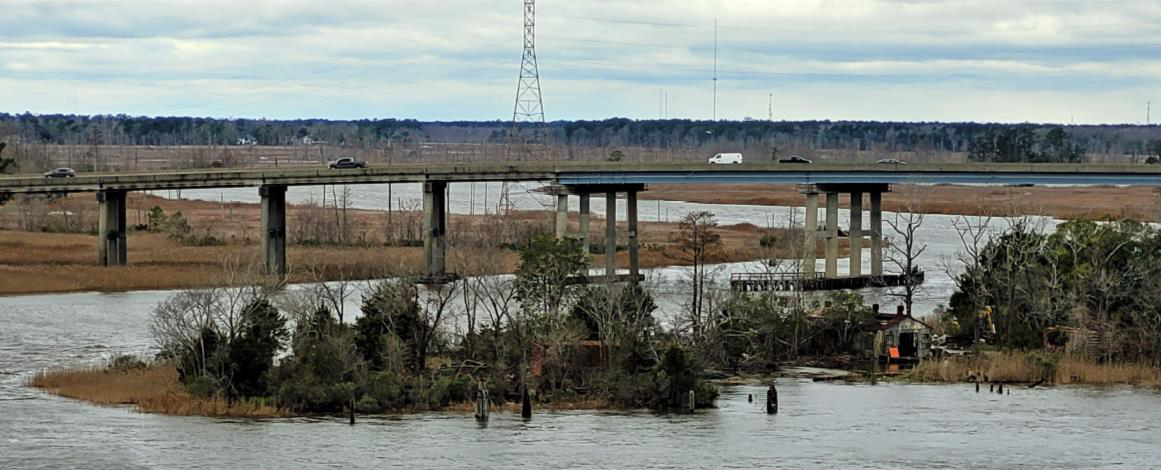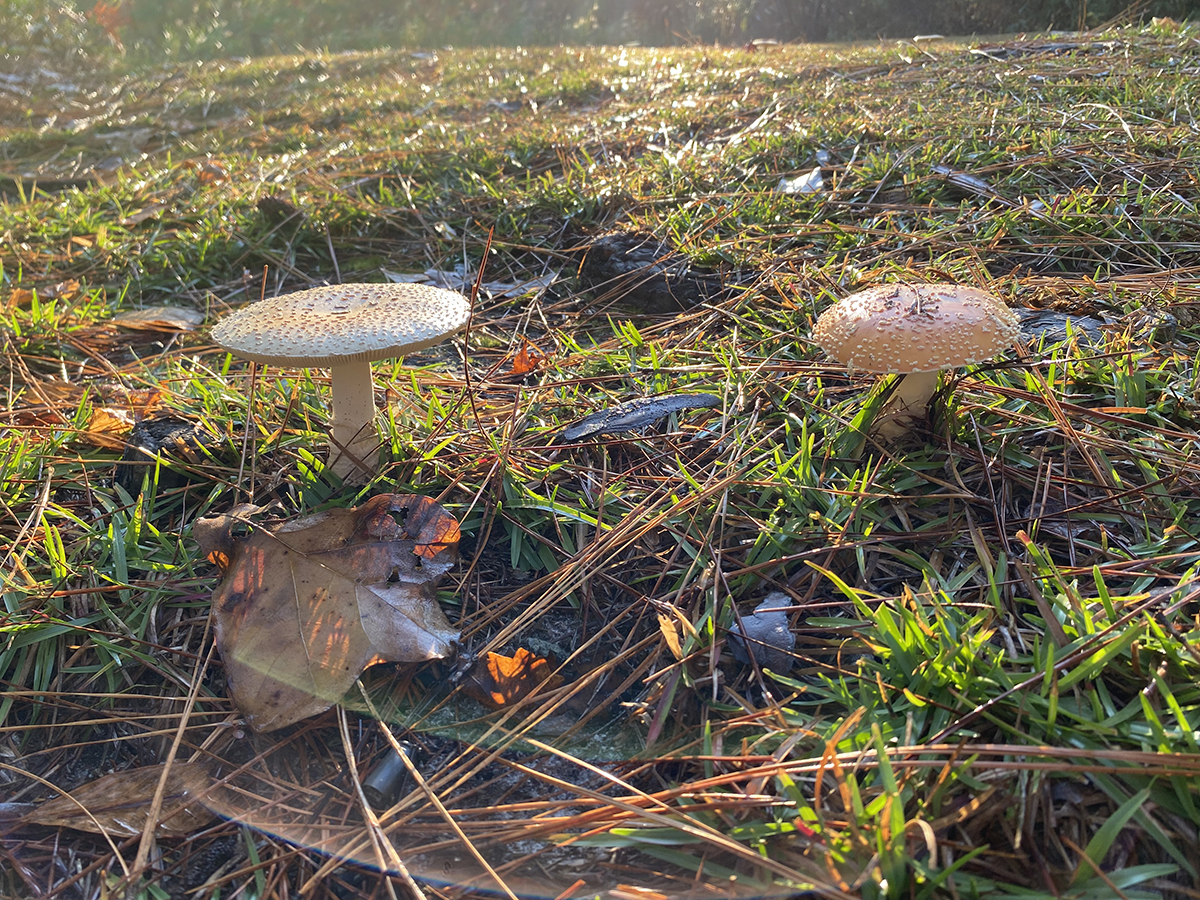
NAGS HEAD — Jockey’s Ridge used to be known as the tallest natural sand dune on the East Coast, but now it’s described as its largest natural active sand dune system.
While it may not be as high as it was in 1973, the unique phenomenon of nature is still there — famously thanks to Carolista Baum, a young mother who that year physically blocked a developer’s bulldozer.
Supporter Spotlight
A celebration of the 50th anniversary of Jockey’s Ridge State Park held June 5-8 drew thousands of people, from folks who had rolled down the dune as children to tourists who climb it every summer to watch the sun set, to share in appreciation of the beloved Outer Banks landmark.
Festivities included a duneside performance last Friday by the popular indie band, the Connells — with a surprise appearance by North Carolina Gov. Josh Stein — followed by the Outer Banks’ first drone light show.
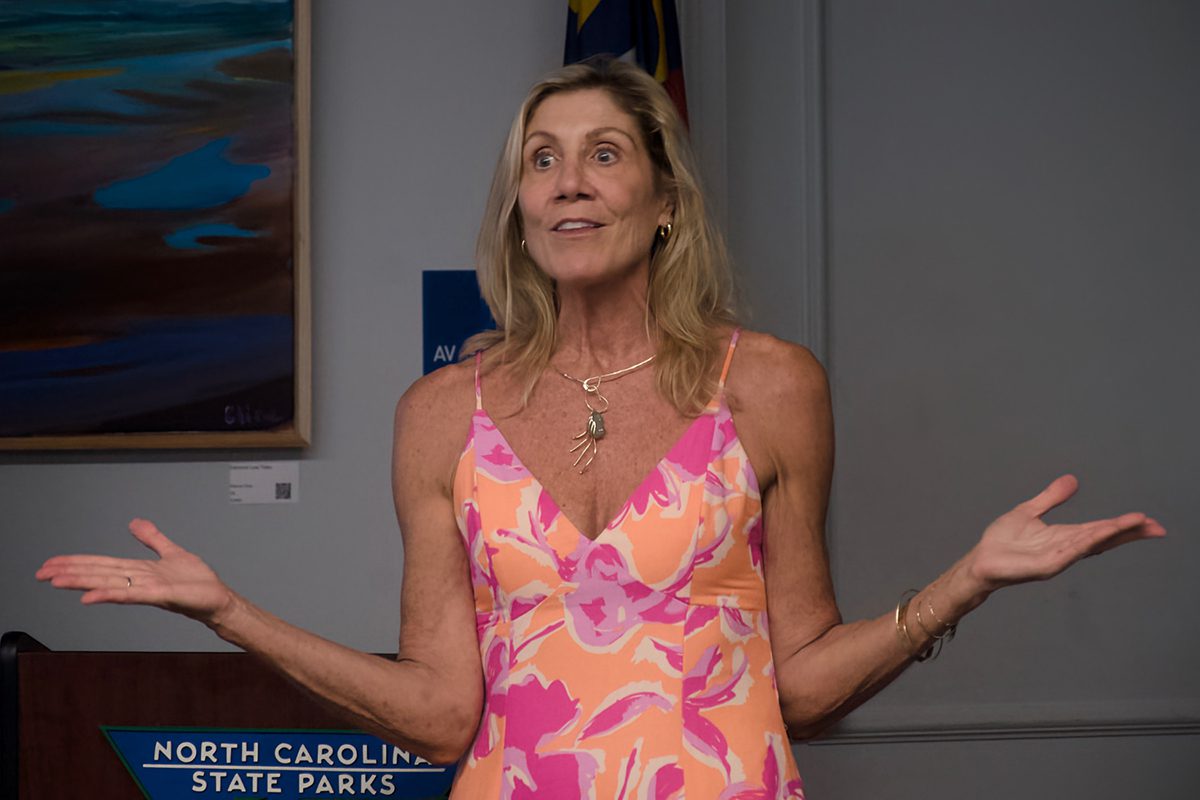
In his introduction to a documentary about “magical, awesome” Jockey’s Ridge screened at the park’s visitor center late that Saturday afternoon, park ranger Austin Paul said the 22-minute “collection of heartfelt stories” from the community and state officials about the site will continue to grow as more content is gathered.
“Jockey’s Ridge is kind of like the center point of the Outer Banks, Ann-Cabell Baum, Carolista Baum’s oldest daughter, says in the film. “Jockey’s Ridge is so many different things to so many different people … It’s part of our souls, it’s part of our hearts, it’s part of our families.”
Baum and her siblings used to play every day on Jockey’s Ridge, she recalled in a later interview with Coastal Review.
Supporter Spotlight
One day the children saw a bulldozer arrive to start digging on the backside of the dune, and Baum, then age 6 1/2, along with her sister Inglis, 5, and her brother Gibbs, 3 1/2, dashed back to their nearby home to tell their mother. Carolista immediately ran over to the spot and stood in front of the bulldozer, not moving until the operator gave up and left, Baum said.
Her petite 33-year-old mother, a dark-haired Edenton farm girl who grew up with six brothers, then promptly removed the distributor cap, and went about rallying the community in what became the “Save our Sand Dune” campaign to get the state to preserve Jockey’s Ridge.
It wasn’t the first time that developers had raised the ire of the locals — by then the Villa Dunes subdivision was already built on the northern edges of the dunes, and plans for the new development had already been submitted to the town. But this time, the whole community got behind her mother, Baum remembered.
“She was sincere and loving and kind,” her daughter said about Carolista, remembering how people always would come by her jewelry shop to visit with her and chat.
A year after the bulldozer was banished, the dune was declared a National Natural Landmark, and the following year the state park was created.
As former Nags Head Mayor and Commissioner Renee Cahoon says in the documentary, the park is an asset to the town in multiple ways.
“No one else has a Jockey’s Ridge,” she says. “It’s not just cultural icon; it’s also a business icon.”
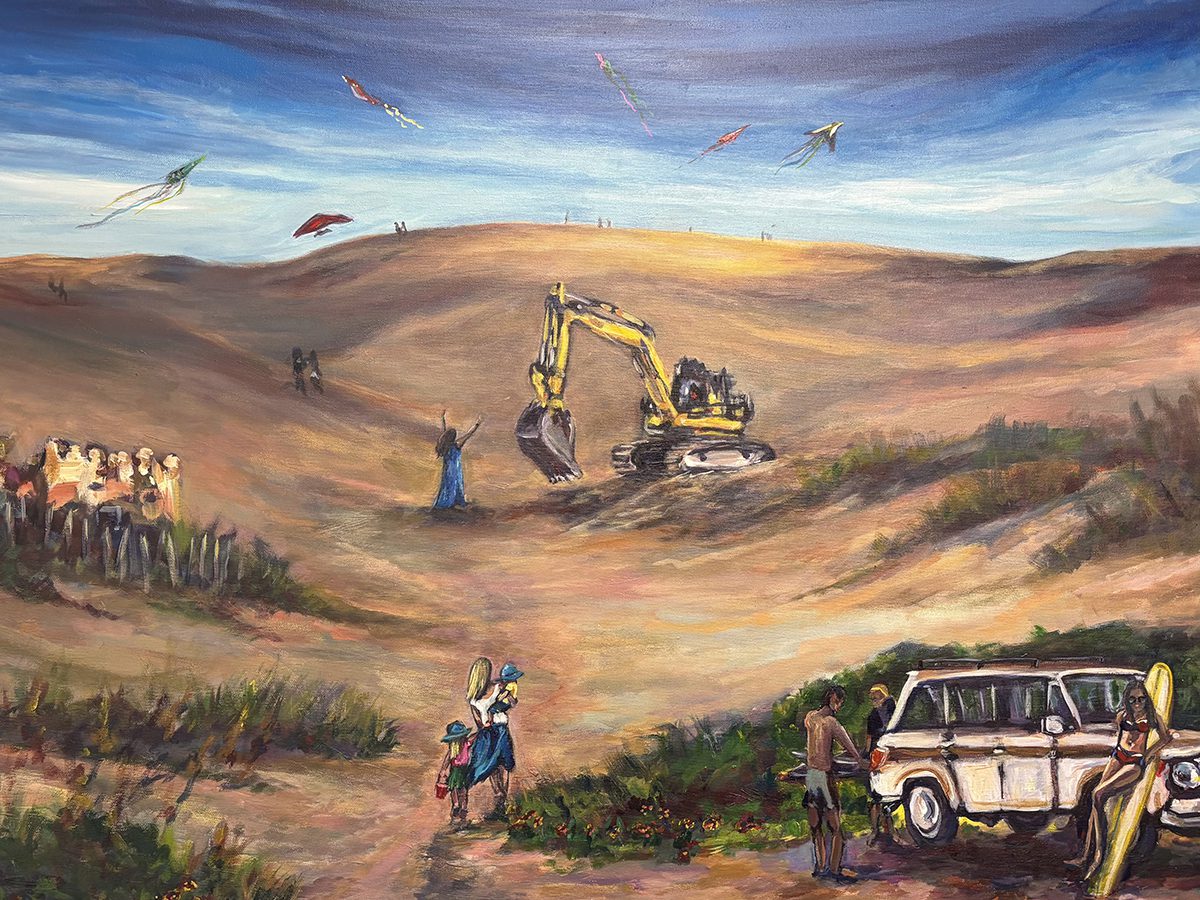
The park is routinely in the top five of the most-visited state parks in North Carolina.
Last year, 1.2 million people visited. But during the COVID-19 pandemic in 2020 and 2021, visitation went through the roof, at 1.9 million and 1.8 million, respectively. Both years had the Nags Head park as the No. 1 most-visited state park. It is currently back to prepandemic visitation.
“It’s more than a fabulous sand pile,” Peggy Birkemeier, a member of the Friends of Jockey’s Ridge Board of Directors, says in the film.
As Birkemeier notes, Jockey’s Ridge has a bounty of natural resources that offer numerous “exciting experiences” for visitors.
The backside of the park abuts the Roanoke Sound, with its long shoreline meandering northward along brackish marshes and toward the ancient maritime forest of Nags Head Woods. It includes a sound beach access that is popular with families. There are also unpaved trails through shrub forest areas beyond the shoreline that lead to the lower expanse of the dunes.
And the night sky above the dunes presents some of the most dramatic scenes on the Outer Banks. In fact, any time of day or night, cloudy or starry, at sunrise or sunset, the sky from Jockey’s Ridge is a wonderment.
“It is certainly a place where many memories are made,” Birkemeier says about the park.
Legacy projects for Jockey’s Ridge that are in the works include the creation of a trail that loops around the park with informational markers about 10 different significant areas — such as hang gliding and the sometimes-buried sand castle — and a time capsule with various artifacts that is tentatively planned to be kept on display at the visitor center museum.
When the park first opened on May 31, 1975, the big dune was 140 feet tall, Jockey’s Ridge State Park Superintendent Joy Cook explained to Coastal Review in an interview after the event. But shifting maritime winds continually rearranged its estimated 30 million tons of sand, mostly quartz blown in ages ago from the mountains, into different shapes, while surrounding development influenced sand travel. Now the dunes are a system of three smaller hills that are 60 to 80 feet tall.
“It’s moving 1- to 6-feet to the south each year,” she said. “The prominent wind is out of the north. The dunes are north-south orientation, and the southeast corner is moving faster than the rest of it.”
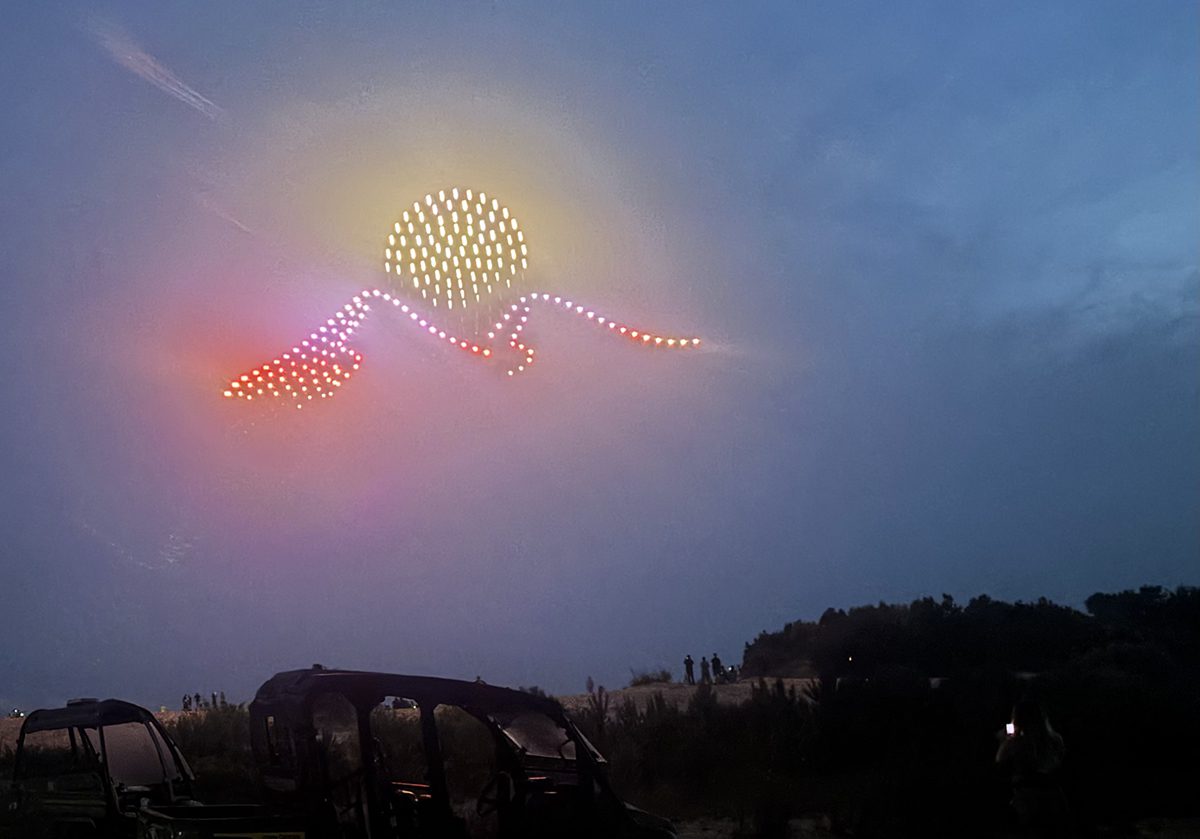
About six years ago, she said, the park had to relocate the sides of the corner that were moving into the road, and it will probably have to be moved again in a few years.
But even at its decreased height, being on top of Jockey’s Ridge is close to a surreal experience, and it’s not only because of the panoramic view of sea, sound and landscape. The vast expanse of undulating sand at times feels nearly mystical. Depending on the time of day, as well as the weather conditions, the shadows cast by the light and the wind-carved designs in the sand can transform the dunes into art.
But as every local knows, Jockey’s Ridge is the last place a person would want to be in extremes of any weather: a blazing hot summer day, a very windy or rainy day, or any degree of thunderstorm. And sometimes being on top in the middle of all that sand can be disorienting — it’s not unusual for visitors to lose their bearings.
On the flipside, kids delight in rolling and leaping down the dune, and young adults love to slide down them on boogie boards — especially if there’s a rare snowfall. Not to mention that the hang-gliding and kite flying, if the wind cooperates, is extraordinary.
Carolista Baum, an artist and a jeweler, died at 50 from a brain tumor. She remains as one of the most admired personalities in Outer Banks history, not only for her vibrancy and strength of character, but for her courage to stand her ground and protest what she believed was wrong.
As many recognized during the anniversary celebration, without Carolista taking action at that moment, and creating the momentum and inspiration in the community for the preservation fight, it’s likely that Jockey’s Ridge would not have been here to celebrate its 50-year anniversary.
“In 1973, she stood in front of a bulldozer and probably wouldn’t have been arrested,” Baum said. “It was a different time then. But I think she still would have stood in front of a bulldozer if that happened today.”



